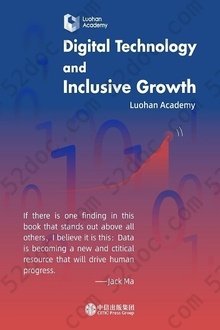注重体验与质量的电子书资源下载网站
分类于: 互联网 云计算&大数据
简介

新普惠经济:数字技术如何推动普惠性增长(英文版): Digital Technology and Inclusive Growth 豆 0.0分
资源最后更新于 2020-03-29 03:39:32
作者:罗汉堂
出版社:出版社中信出版社
出版日期:2020-02
ISBN:9787893998324
文件格式: pdf
简介· · · · · ·
本书基于阿里巴巴等的电子商务实践,强调了数字技术对普惠性增长的积极影响。纵观历史,技术进步始终是增长的源动力,但新技术的变革可能会带来波动。不过,数字革命却有不同以往的特点:数字技术的采用和渗透门槛较低,数字信息成本低、具有非竞争性等。这些特性对数字革命的普惠性有深远影响。本书有五个关键结论:一是数字技术能够成为普惠性增长的重要推动力;二是为普及数字技术,降低技能门槛的重要性不亚于提高技能水平;三是数字平台体现了一种全新的交流和协作方式,能够促进经济和社会融合;四是有效的数字技术渗透需要政府和企业密切合作;五是应对数字技术带来的影响必然具有挑战性,但我们必须把事实与虚构和推测区分开。总之,数字技术大大地降低了欠发达国家和地区技术采用的滞后性,并提升了其技术渗透率,为更多人提供了发展机会和保障。虽然面临很多挑战,一种更具普惠性和可持续性的新发展范式正在形成。英文版:This book highlights potential positive impacts of digital technology on inclusive growth—growth that is broad-based and offers opportunities and protections for all. Throughout history,technological progress has always been the fundamental driver of progress,but the transition to new technology can be bumpy. Digital revolution is no exception,but it stands out from previous technological revolutions for two reasons:a low threshold for the adoption and penetration of digital technology,and the low use cost and non-rival nature of digitized information.These characteristics have profound implications for digital technology’s impact on inclusion.By grounding theoretical logic in empirical evidence,this report offers several lessons for how to harness digital technology.1)Digital technology can be an important driver of inclusive growth.2)To promote digital penetration,lowering the skill threshold is as important as raising the level of skills.3)Digital platforms represent new forms of exchange and coordination that facilitate economic and social integration.4)But effective digital penetration is not automatic;it requires an effective partnership between the public and private sectors.5)Managing unanticipated challenges such as data privacy and inequality is a complex task,but we can start by separating fact from fiction and fear.In sum,digital technology greatly reduces adoption lags and lifts penetration rates for less developed countries and regions,thus enlarging growth opportunities for us all.Despite many challenges,a new development paradigm is emerging,one that is inclusive,sustainable,and may not require massive investments up front.罗汉堂编著
目录
Mission Statement of Luohan Academy
Foreword 1
Foreword 2
Executive summary
New technologies present both opportunities and challenges
What makes digital technology so special?
What have we learned by studying the adoption of digital technology in China?
A call for a new development paradigm
Session 1 Introduction: The big picture
Pessimism vs optimism vs creative destruction
How did economies grow in the past?
What is different about digital technologies?
How should we embrace digital technology?
Session 2 Digital technology-driven trade
The Macroeconomic perspective
The reach and impact of e-commerce
Case box 1: Taobao villages and e-commerce development in rural China
Case box 2: Shaji, a Village transformed by the internet
Summary and Conclusion
Session 3 Digital ecosystems for inclusive finance and social protection
Financial inclusion has presented a challenge for a long time
Why is financial inclusion so challenging?
Digital finance offers an accessible, affordable,and sustainable financing model
Evidence of digital financial inclusion
Case box 3: Health, education, and environmental protection
Session 4 How have digital technologies transformed the market?
Three building blocks for markets
The advantages of digital markets
Box 1: The Economics of Market Friction
Session 5 The global implications of China’s experience
Some minimum infrastructure requirements
The importance of low skill thresholds and low costs when putting digital technology to work
Case box 4: M-PESA
The importance of an adequate institutional infrastructure when doing business
Box 2: China’s scientific and technological development
The importance of market integration
Pathways to digital development
Session 6 Understanding and managing unforeseen contingencies
Digital technology and employment
Case box 5: Employment in the retail industry in the United States and China
Competition policy in the digital age
Digital technology and privacy protection
Technology and inequality
Session 7 Concluding Observations
References
Legal Statement
Acknowledgment








